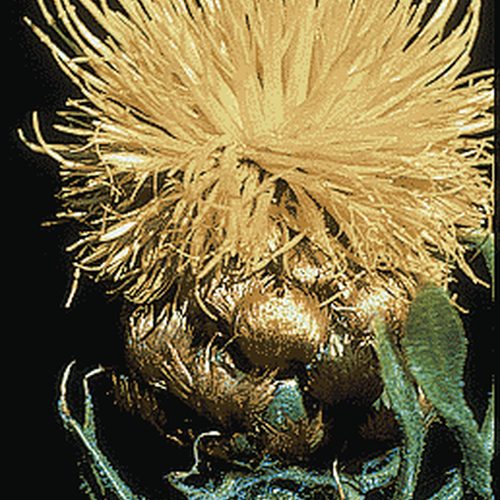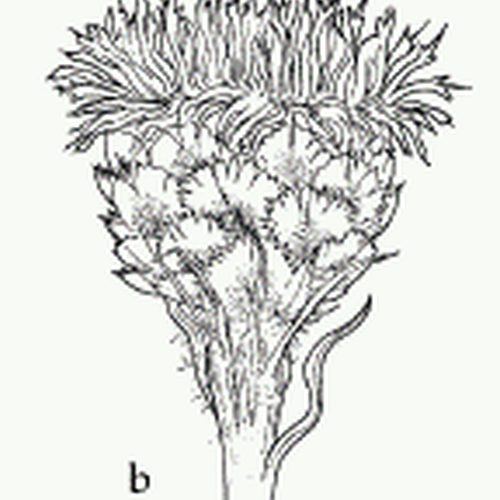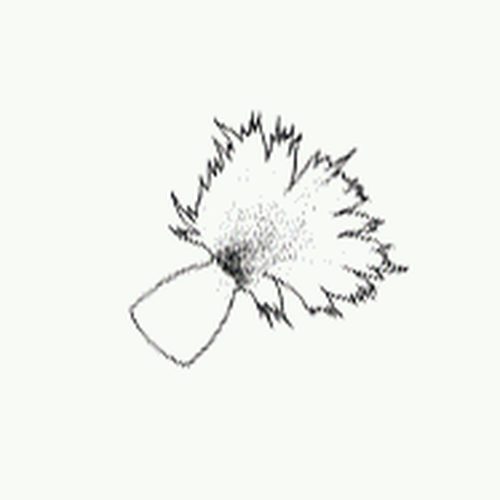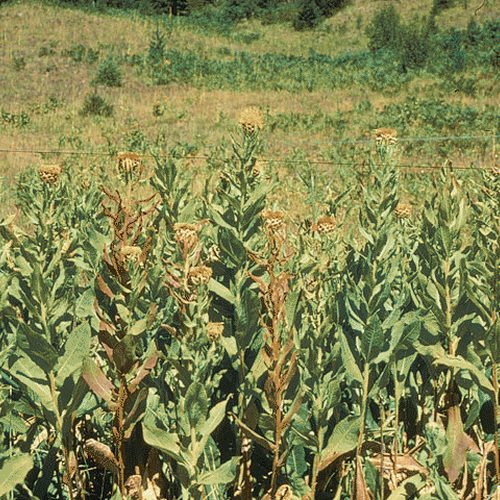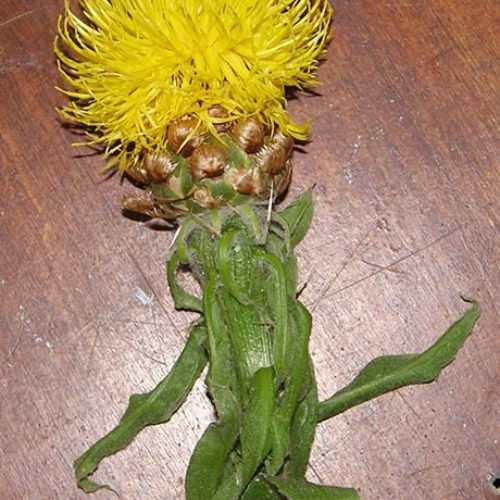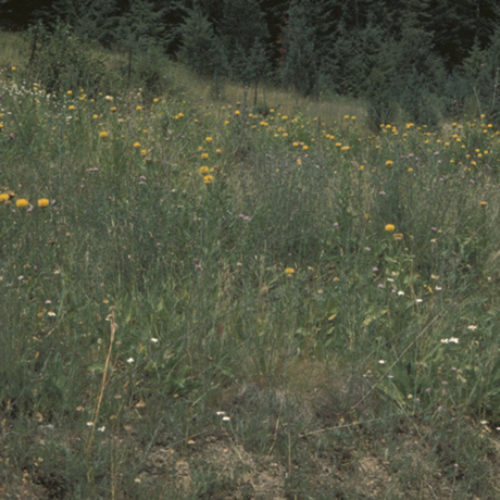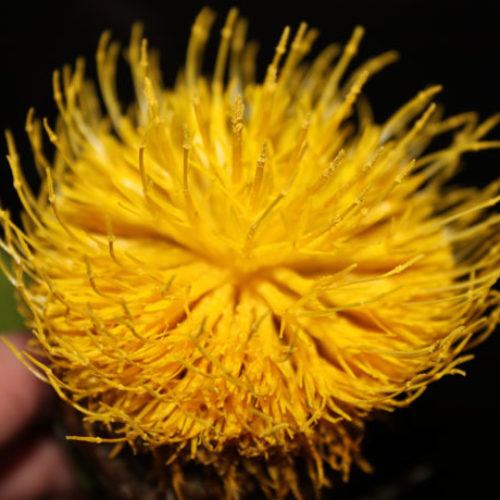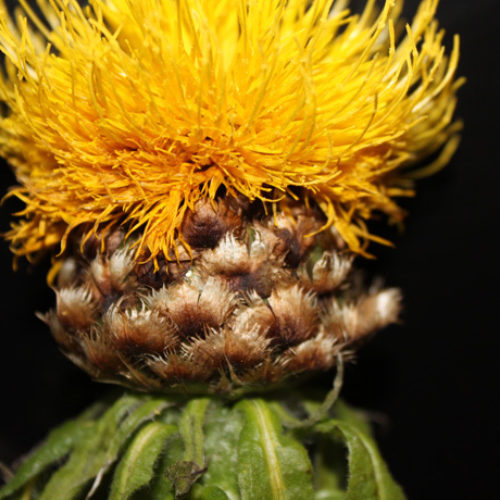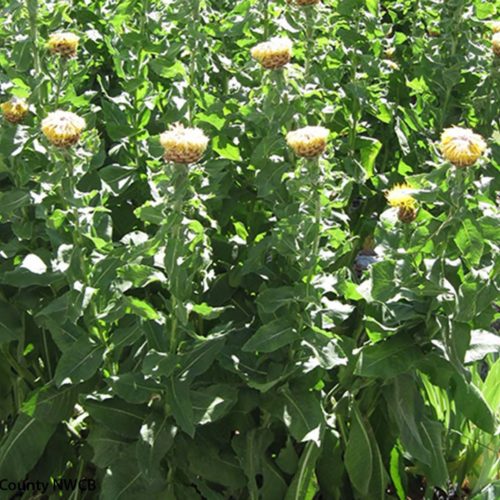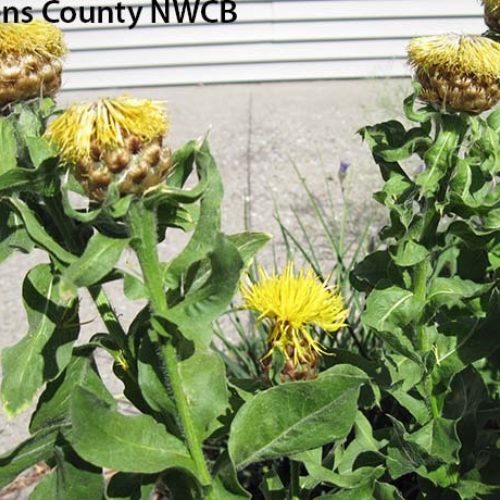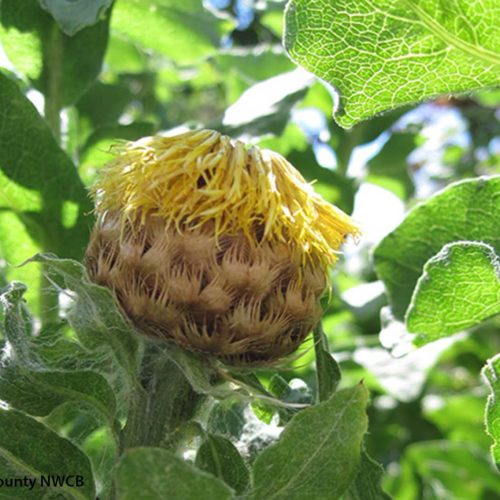Bighead Knapweed
Centaurea macrocephala
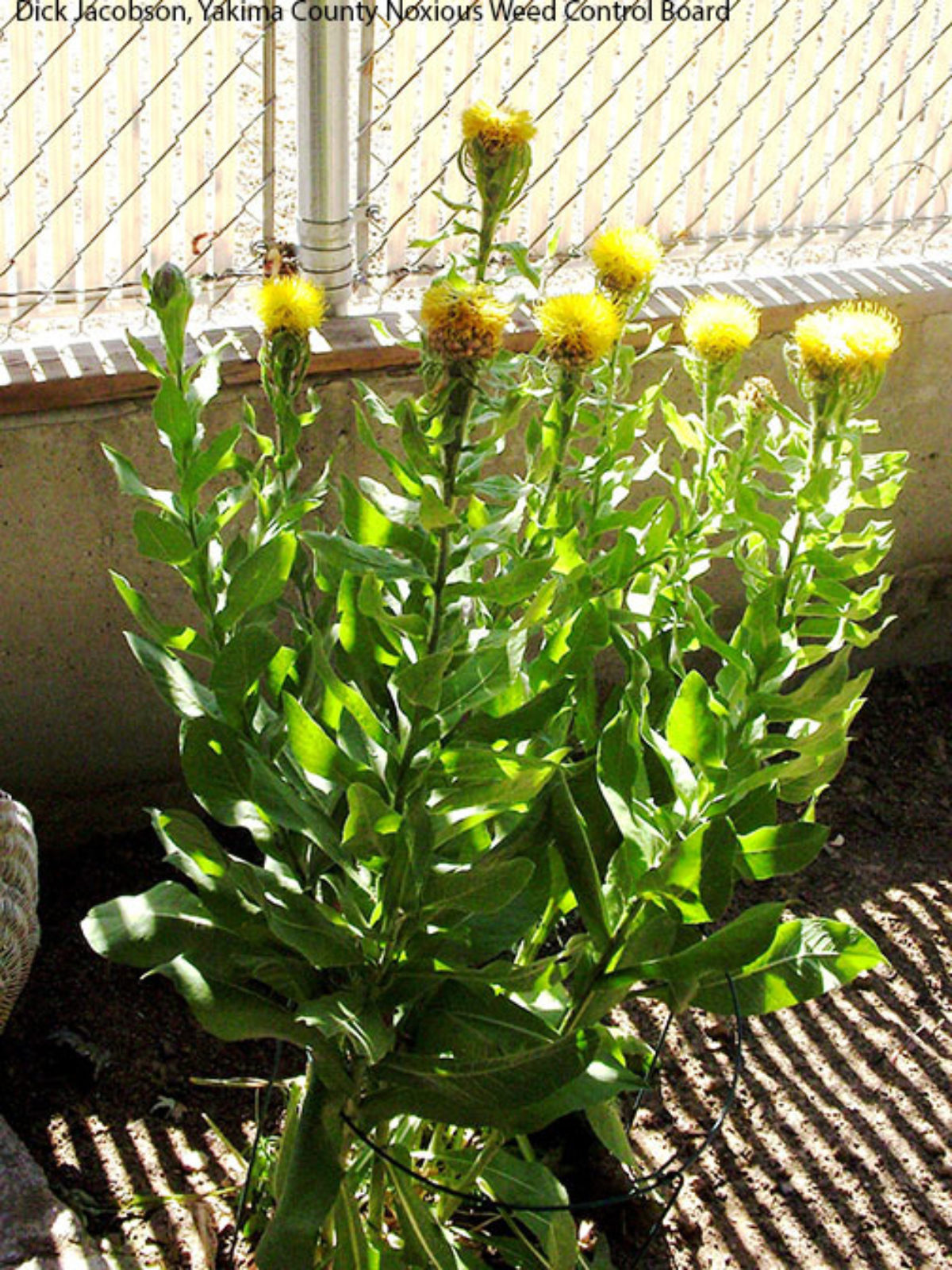
Family: Asteraceae
Other Common Names: lemon fluff, globe centaurea, yellow bachelor's button
Weed class: A
Year Listed: 1988
Native to: Romania and Armenia
Is this Weed Toxic?:
not known to be
Legal listings:
This plant is on the quarantine list. It is prohibited to transport, buy, sell, offer for sale, or distribute plants or plant parts of quarantined species into or within the state of Washington or to sell, offer for sale, or distribute seed packets of seed, flower seed blends, or wildflower mixes of quarantined species into or within the state of Washington. Please see WAC 16-752 for more information on the quarantine list. For questions about the quarantine list, contact the Washington State Department of Agriculture's Plant Services Program at (360) 902-1874 or email PlantServices@agr.wa.gov.
Why Is It a Noxious Weed?
Bighead knapweed is very difficult to control once established and is a threat to our natural areas, including subalpine meadows. As a Class A noxious weed, eradication of bighead knapweed is required in Washington.
How would I identify it?
General Description
It is the tallest knapweed in Washington, growing 19 inches to 5.6 feet in height. It is a tap-rooted perennial that typically grows a rosette (cluster of radiating leaves at ground level) the first year and flowering stems the following years.
Flower Description
Solitary flower heads are globe-shaped and range 1 to 3 inches in diameter. Bracts at the base of the flower head are light green to tan and have thin, papery, fringed margins. Lower bracts may have weak spine tips. Flowers are yellow.
Leaf description
Leaves are alternate, may have hairs, gland-dotted and with lower leaves having a stalk and upper stalkless. Leaves become smaller moving up stem. Shape varies, narrow and wider above the middle to narrowly egg-shaped. Edges range from toothed to smooth.
Stem description
Stems are upright and either unbranched or sparingly branched, terminating in a single flower head. Stems may have some soft hairs.
Fruit Seed Description
Brown seeds are 0.27 to 0.31 inches (7 to 8 mm) long with flattened bristles on one end.
Where does it grow?
It grows in open grassy areas such as fields and pastures. Please click here to see a county level distribution map of bighead knapweed in Washington.
How Does it Reproduce?
It reproduces by seed and reproduction is also possible from root divisions. The rosette typically does not produce a flowering stem the first year. Seeds are dislodged from mature seed head by direct contact or wind, though not wind dispersed.
How Do I Control It?
Mechanical Control
Pulling bighead knapweed is impractical for large infestations, but small plants may be dug out. When the flowering stem is broken off without removing the tap-root, a new stem will grow from the woody crown, producing another flower head later in the season. Repeated mowing will reduce seed production, and will eventually diminish root reserves.
Biological Control
No biological controls are known for bighead knapweed.
Herbicide Control
Please refer to the PNW Weed Management Handbook, or contact your county noxious weed coordinator.
For More Information
Selected Knapweeds of Washington Brochure
See our Written Findings for more information about bighead knapweed (Centaurea macrocephala).
Stevens County NWCB Fact Sheet on bighead knapweed
King County NWCB Fact Sheet on bighead knapweed
Whatcom County NWCB Control Options for Knapweeds



